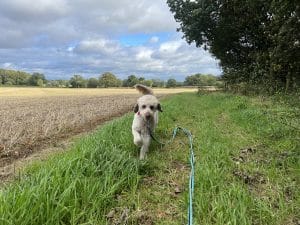Dog owners who experience behaviour issues with their canine companions, however minor or severe, often believe the dog is naughty or genetically aggressive, or simply blame the behaviour on the fact they have selected a high energy dog that should really be working rather than living in a domestic environment, and has an attitude that will never change.
Some of the common phrases we hear associated with this ‘I didn’t experience this with my last dog’, or ‘If only I had known this breed was like this, I certainly would never had considered one’, or ‘I treated my last dog the same way but he was easy and I didn’t even have to train him’ , or ‘I researched this breed and it didn’t mention this in the information’, or ‘I have been taking him to agility which the trainer said he is brilliant at, but he pulls on the lead, jumps up and barks at strangers’.
It is true that the early stage of puppy development is a crucial time for learning. It is a time whereby the dog is highly impressionable, when the correct focused guidance, correct careful socialisation and a positive routine will ensure the puppy grows into a well mannered dog to be proud of. That being the dog that everyone admires, the dog that comforts you when you are most in need of that special calm, reassuring, connection. The dog one can take anywhere and be certain he or she simply fits in rather than rules or disrupts, the dog that waits patiently if you are late going out for a walk, because you have a head ache. The perfect canine companion that suits and enhances your lifestyle.
It will likely surprise you to know that the majority of the dogs with behaviour issues seen here at Kelford, display such issues due to incorrect handling, or over handling the dog in the home, or the behaviour is a product of the owner seeking & carefully following the given advice, but has in fact actually been given inappropriate advice from inexperienced ‘treat trainers’.
It will take consistency, determination, and excellent handling for your canine companion to believe in your capabilities as the decision maker. Only then will your dog willingly look to you for direction, when change occurs to the familiar. Leadership is required for your dog to follow direction and be a pleasurable, loyal canine companion.
